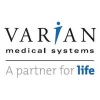Computer Graphics is rapidly changing - AI and neural rendering, DLSS, ray-tracing and differentiable rendering all are relegating traditional triangle rasterization to small and shrinking percentage of the frame.
This is causing a rethink of what it means to be a graphics API and driver : what does a graphics driver stack look like when the majority of the pixels created are generated through AI?
How do we bring developers who’ve rendered triangles for 20 years over to this new world?
Our team is attempting to steer the Vulkan, SPIR-V ecosystems through this transition - partly with Slang, and probably with more! If this seems like an interesting challenge to you, NVIDIA graphics may be for you! We seek a Principal Graphics System Engineer.
You need to be highly motivated. You need to have used graphics drivers extensively - not just created specs. The perfect candidate will have familiarity with these types of emerging rendering techniques, and be able to help us define the change.
What you'll be doing :
Design and implement new emerging graphics features that cut through the entire stack from top level graphics APIs through shading languages and into the driver stack.
Driving neural graphics adoption into 3rd party API’s and into customer products
Leading multi-functional engineering team developing graphics systems
Collaborate with engineering leaders in NVIDIA graphics communities and define next-generation real-time graphics system and softwares for other accelerators in SoC
What we need to see :
Bachelor’s degree (or equivalent experience) in Computer Science, Software Engineering, or a related degree with a proven track record on impacting computer graphics industry
15+ years of hands-on experience in shipping graphics driver and / or graphics software
Very deep knowledge of GPU hardware and related system software topics such as graphics driver, shader compiler, display, kernel, and operating systems.
Strong technical leadership skills for cross-team decision-making on challenging technical or operational aspects of a project
Excellent written and verbal interpersonal skills, with the ability to work in a team spread across multiple time zones
Ways to Stand Out from the Crowd :
A proven track record in defining new technology frontiers and direction in computer graphics
Extensive experience in modern rendering APIs and shading languages such as Vulkan, DirectX12, GLSL, HLSL, and / or SPIR-V
Familiarity with how new rendering techniques in research phase such as Gaussian splatting and NeRF are evolving, and an ability to articulate implications to the traditional graphics API stack
Experience in using AI based algorithms for super scaling, and frame generation, ray tracing, etc
Significant experience with game engines (e.g., Unreal Engine, Unity) and graphics middleware as well as a proven track record in standards bodies and meaningful project contributions within computer graphics
With highly competitive salaries and a comprehensive benefits package, Nvidia is widely considered to be one of the technology industry's most desirable employers.
We have some of the most forward-thinking, resourceful and dedicated people in the world working with us and our engineering teams are growing fast in some of the hottest innovative fields : Quantum Computing, Artificial Intelligence, and Autonomous Vehicles.
Are you a creative and autonomous engineer with a real passion for machine learning, computational chemistry, data science & parallel computing?
If so, we want to hear from you.
The base salary range is 272,000 USD - 419,750 USD. Your base salary will be determined based on your location, experience, and the pay of employees in similar positions.
You will also be eligible for equity and benefits (https : / / www.nvidia.com / en-us / benefits / ) . NVIDIA accepts applications on an ongoing basis.
NVIDIA is committed to fostering a diverse work environment and proud to be an equal opportunity employer. As we highly value diversity in our current and future employees, we do not discriminate (including in our hiring and promotion practices) on the basis of race, religion, color, national origin, gender, gender expression, sexual orientation, age, marital status, veteran status, disability status or any other characteristic protected by law.









